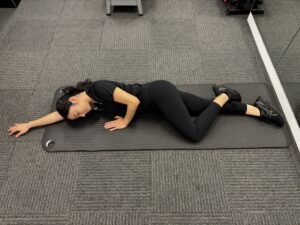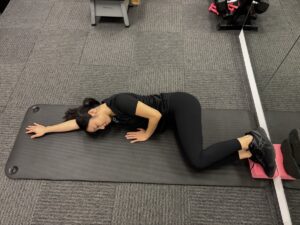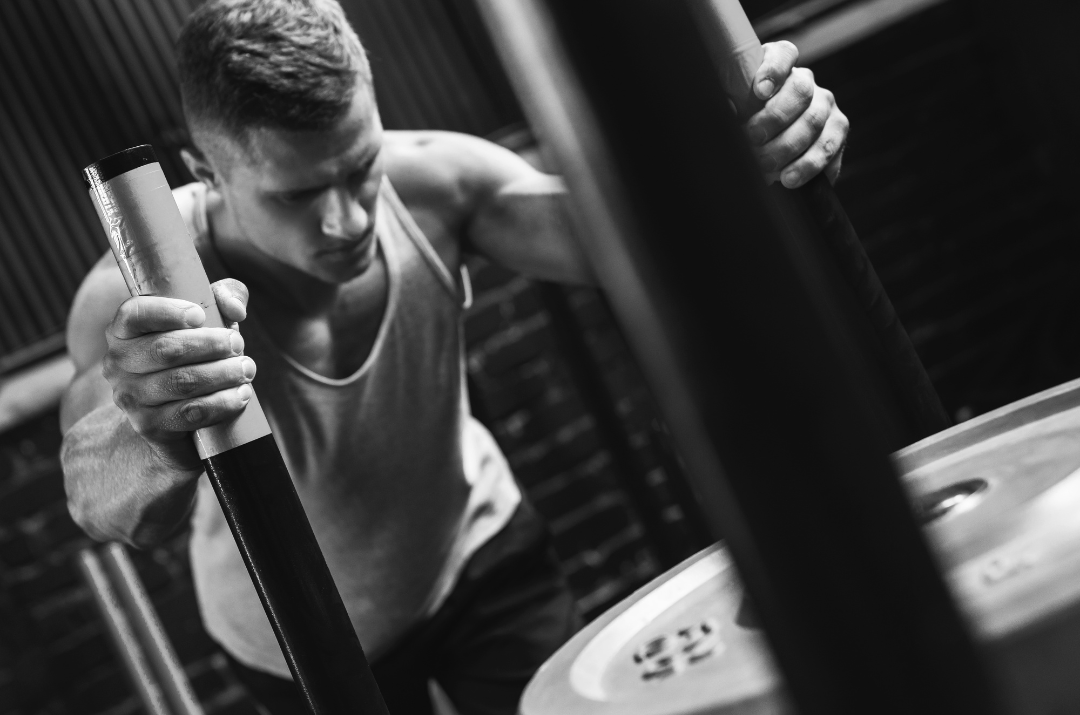Not feeling the clams?
The side-lying clamshell exercise is a popular and a commonly prescribed exercise for those who experience hip, knee and lower back pain. It involves lying on your side with knees bent, lifting the top knee upwards – mimicking the opening of a clam shell.
This exercise aims to activate your gluteal muscles, in particular the glute maximus and medius. The glutes are an important muscle group that is essential for all movements; they help with stability and balance, power and overall injury prevention. The glute is made up of 3 muscles:
- Glute minimus: the smallest one, that helps with hip abduction and internal rotation.
- Glute medius: hip abduction and internal rotation.
- Glute maximus: the largest one, that helps with extending and externally rotating the hip.
There’s some debate in the physio world about whether prescribing this exercise is truly effective. The answer depends on the individual and their specific injuries. This is because the exercise:
- Doesn’t translate well to functional movements/activities
- Is low in load and intensity
- Is often prescribed as a “default” exercise without proper individualisation and cueing
Many people report not feeling much from the exercise or feeling the “wrong” muscles working instead, so they end up forgetting about it. Most of the time it comes down to how the exercise is prescribed and performed. Small variations and proper cues can make a huge difference.
If you’re finding it hard to “feel” the clamshell exercise, it is worth trying the variations below:
- The lock clam
- Lying on your side with the bottom leg straight
- Have the top leg bent with your toes touching the achilles
- This position will allow the pelvis and upper body to tilt forwards, try maintain this position
- Now lift the top knee up (the movement will be little)
- And lower
- Repeat
- Clam with knee slide
- Lie on your side with your hips and knees at 90 degrees, and feet flat against the wall (you can pop a block under the feet)
- Slide the top knee forwards, allowing your pelvis to tilt forwards
- Maintain that positioning, and lift the top knee up
- Lower the leg, and slide the knee back to the starting position
- Repeat
Note: Because of the pelvic tilt and locked position, your knee may only lift a small amount – that’s okay!
In rehabilitation, the clamshell exercise and its variations are useful as it is low impact and gentle, facilitates muscle activation and builds a good foundation for progression. Additionally, for regular gym goers or athletes involved in running, lifting or field sports, it’s a good addition to your warmup to activate the glutes prior to your training.







